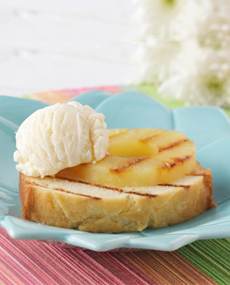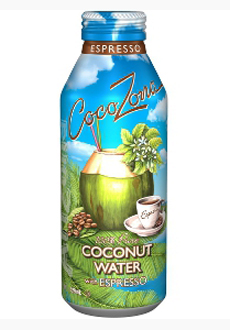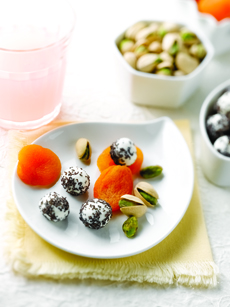
Great with cheese! Photo by Elvira Kalviste |
THE NIBBLE. |
|
Whenever we entertain, we look for new and exciting crackers to serve with cheeses and dips. Recently, we tasted the Raincoast Crisps line, and asked chef Johnny Gnall to pair the different flavors. (If you have questions or suggestions for tips, contact JohnnyGnall@hotmail.com.)
As a chef, I am typically pretty picky about my store-bought snack foods. Ritz crackers and Wheat Thins, though enjoyable in their own right, usually don’t make the cut when it comes to stocking my shelves. If I’m going to spend my money on something crispy to plunge into a container of whipped cream cheese (my go-to couch snack), it has to live up to a high standard.
The bar on this standard was recently raised when I discovered Raincoast Crisps.
Moreover (and this is not to be underestimated), Raincoast Crisps are hearty enough to withstand snapping in thicker dips. We’ve all experienced that frustrating moment when the bottom half of a potato chip breaks and is left to drown in the sour cream dip. Fret no more!
|
|
Raincoast Crisps will scoop even the chunkiest of condiments and stay strong to the last bite. They come in a number of different flavors, each of which has its own ideal pairings and toppings.
Best of all, they are quite delicious: Even though they make a superb base for any number of fruits, cheeses and condiments, you’ll have no problem devouring them plain.
Here are the flavor varieties, along with some suggested toppings/dippings. These are but a few suggestions; the real fun comes when you open your own refrigerator and get creative!
|
|
Cranberry Hazelnut Crisps: While dried cranberries are enjoyed year-round, these crisps and their festive flavors just scream “Holidays!” You can’t beat a wheel of baked Brie, hot out of the oven. Just put it on a plate, surround it with crisps and watch magic happen as it disappears. Sweeter toppings also work really well with these crisps: Try a little mascarpone cheese, some Nutella or ricotta, plain or lightly sweetened. Of all the Raincoast Crisps varieties, these ones seem to pair best with sweeter flavors.
Fig & Olive Crisps: Salty Kalamatas and sweet Adriatic figs populate these crackers, my favorite flavor. I love them with classic Mediterranean toppings such as goat cheese or crumbled feta. The saltiness of the feta, in particular, makes the flavors of olives and figs really pop. You’ll be surprised how well the sweetness of the figs works in savory applications.
Original Crisps: These guys are toasty and nutty, just as you want a hearty cracker to be, with hints of spice and a mildly sweet finish. The home-run pairing with smoked salmon & cream cheese is perfect for brunch, party canapés or even a light lunch. They are also an excellent dipper for paté or any flavor of hummus.
|
|

Consider boxes of Raincoast Crisps as gifts for fine-food-loving friends. Photo by Elvira Kalviste | THE NIBBLE. |
Rosemary Raisin Crisps: This balance of sweet and savory also contains pecans for a nutty surprise. Try topping these with crumbled blue cheese, or for a hot appetizer, some caramelized onions and a few drops of honey. The rosemary notes provide a great backdrop for savory toppings like sautéed mushrooms. Thinly sliced turkey breast, honey-baked ham and chicken salad are at home atop these fragrant crisps. And if you’re into indulging, serve them up aside a hot pot of fondue.
Salty Date & Almond Crisps: These crisps are for folks who want a saltier crisp. Dusted with sea salt, they pair well with white bean dip, fresh herbs and nutty, melty cheeses like Gruyère. I also think they are the best flavor for spicy toppings (try them with jalapeño jam!), as the salt helps to keep flavors and heat in balance.
MORE THAN A CRACKER
Beyond standard cracker usage, Raincoast Crisps are delicious enough that you may be interested more creative applications.
Pulse them in the food processor, or crushing them with a rolling pin, to make breadcrumbs.
Crumble them by hand for a quick, healthy addition to soups and salads in place of croutons; or do the same for your late-night ice cream/yogurt/sorbet fix.
Serve them with salads, soups and other foods instead of a side of bread.
And of course, serve them with a cheese plate. They may out-glamour the cheese.
However you choose to consume Raincoast Crisps, don’t be surprised if your old go-to crackers start acting jealous… they have good reason to do so.
Find more about Raincoast Crisps on the company website.
You’ll encounter some sticker shock: a six-ounce box runs around $7.99 – $8.99, depending on the retailer. But if you like discovering the new and delicious, treat yourself to a box. Buy them on Amazon.com.
|
|








